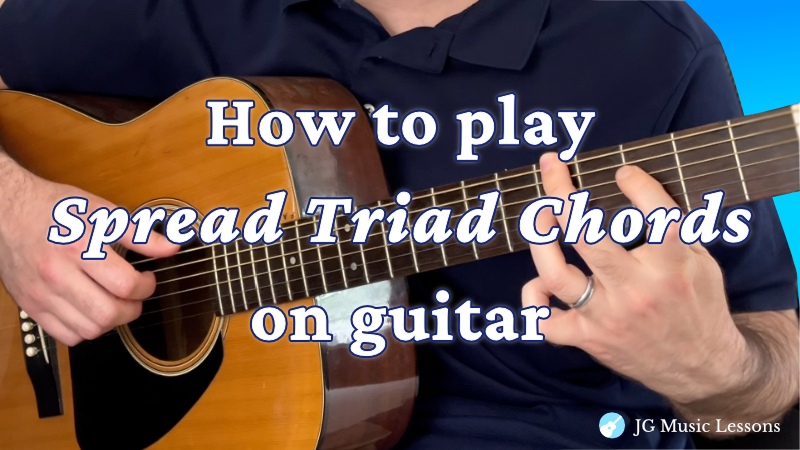Spread triad chords are simple yet beautiful chords that you can use to express harmony using an airy, open sound. These three note chords are useful movable shapes that you can play on the 6th, 5th, and 4th strings.
In this lesson, you can learn how to play these spread triad chords for Major, minor, diminished, and augmented chord qualities. We’ll also cover spread triad chord application examples with audio that you can try as well.
We’ll first go over the music theory on spread triad chords, look at the guitar chord shapes, and finally go over musical application examples. Grab your guitar and let’s get started!
What are spread triad chords?
As the name suggests, spread triad chords are chords that have a wider space between the notes of a triad. This is done by dropping the second voice of a chord to the bass note, also known as drop 2 chords.
For example, let’s take a C Major triad chord which has the notes C, E, G which are the 1st, 3rd, and 5th degrees. If we drop the second note to the bass, we get E, G, and C (spread triad in 1st inversion, meaning the 3rd is the bass). Lowering the middle note of a triad chord creates a gap or “spread” between notes which gives a distinct open sound.
We can also drop the second note of chord inversions. For example:
- C Major triad 1st inversion (E, G, C) becomes the spread triad G, E and C (spread triad 2nd inversion, meaning the 5th is in the bass).
- C Major triad 2nd inversion (G, C, E) becomes the spread triad C, G, and E (spread triad in root position).
See the following chart to better understand this spread chord concept using different inversions.

As you’ll see in the guitar charts in the next section, spread chords can be applied to any chord quality.
If you want to review basic chord music theory, check out what are triads and how to play them on guitar.
Major, minor, diminished, and augmented spread triad chords
Before going over the spread triad chords, let’s review some music theory about these chord structures for different chord qualities. You can click on the chord qualities listed below to learn different ways of playing them on guitar.
| Chord qualities | Chord tones | Scale notes for C as the root |
|---|---|---|
| Major chord | 1, 3, 5 | C, E, G |
| Minor chord | 1, b3, 5 | C, Eb, G |
| Diminished chord | 1, b3, b5 | C, Eb, Gb |
| Augmented chord | 1, 3, #5 | C, E, G# |
Major spread triad chords
The following charts show examples of spread triad chords including inversions, meaning to use different chord tones as the lowest note. Adjust these shapes if you’re applying them to chords with open strings.
How to read the chord charts
For the charts below:
- The top horizontal line of the chord chart represents the high E string and the bottom horizontal line represents the low E string.
- The vertical lines separate each fret.
- The numbers in the blue dots tell you which fingers to use on the fretting hand.
- The letters on the right of the charts tell you what notes you are playing on each string.
- Circles on the left represent open strings.
- Red X means to avoid that string.
You can check this link for more on how to read guitar notation symbols.
Spread triads 6th string
These chords have gaps between notes, making it ideal for a fingerpicking style of playing. However, you can also play these spread chords with a pick by arpeggiating the notes (playing one note at a time).

Spread triads 5th string

Spread triads 4th string

Minor spread triad chords
Spread triads 6th string

Spread triads 5th string

Spread triads 4th string

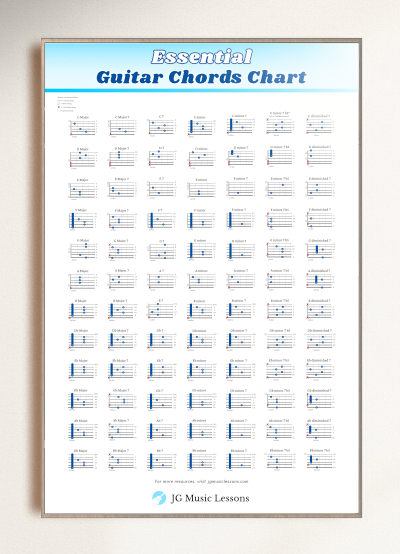
Diminished spread triad chords
Spread triads 6th string

Spread triads 5th string

Spread triads 4th string

Augmented spread triad chords
Spread triads 6th string

Spread triads 5th string
Notice how we can use the same shape for all inversions. This is because the distance between each note in an augmented triad is the same! (Each note is a Major third interval apart).

Spread triads 4th string

Keep in mind that there are other ways of playing some of these chord shapes we went over, but these would be a good place to start if you’re new to playing spread triad chords.
Spread triad application examples
Here some exercises which show you how to apply these spread triads within different chord progressions. Use the audio below the notation to help you learn the examples!
Spread chords example 1
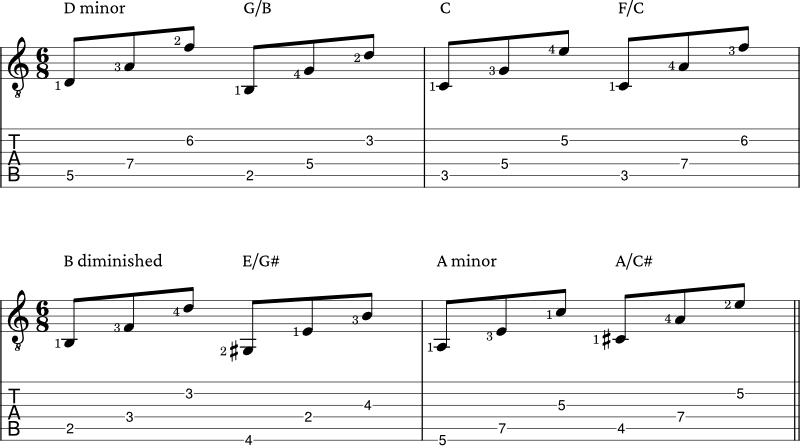
Spread chords example 2

Spread chords example 3
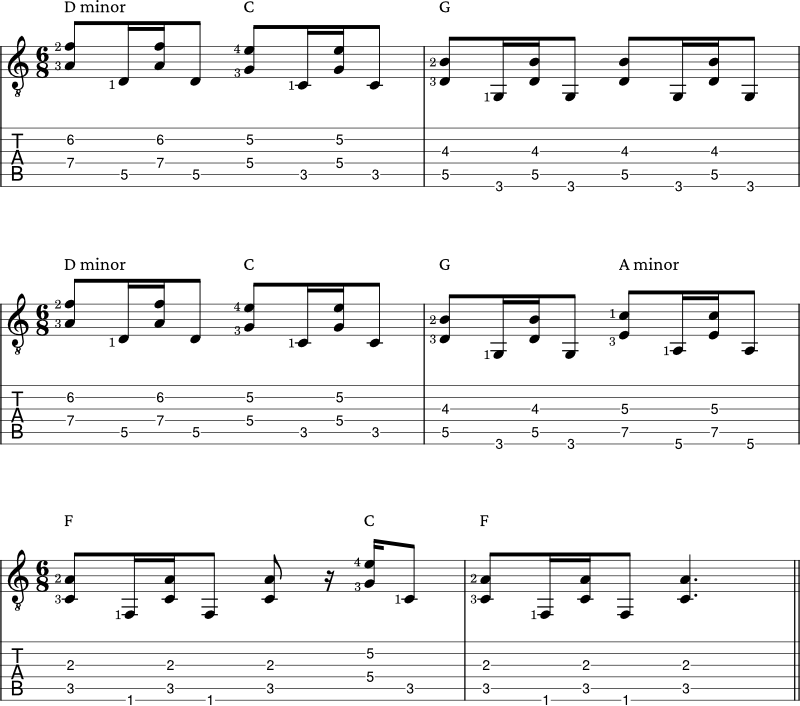
Spread chords example 4
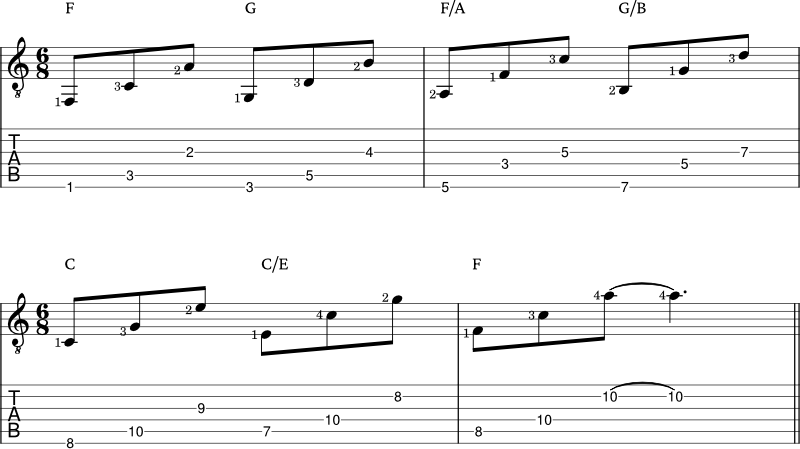
Spread chords example 5
This example shows how you can play all the spread triad chords for every chord related (a.k.a diatonic chords) in the key of C Major.
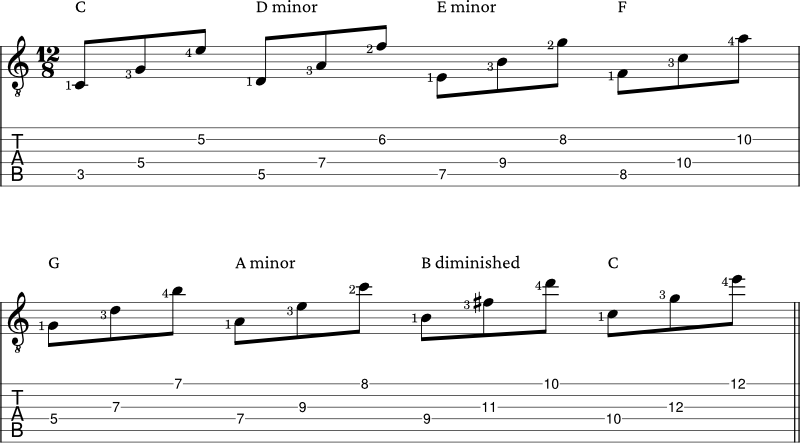
Spread chords example 6
Here is another variation using a different picking pattern in the key of C.

Spread chords example 7

Spread chords example 8

Spread chords example 9

Spread chords example 10
This example would be ideal for finger picking but if you use a pick, you could try a hybrid technique by using your middle, ring and/or pinky finger to play notes on other strings at the same time.

Spread chords example 11
These are all the related chords in the key of E Major using all inversions for each chord.
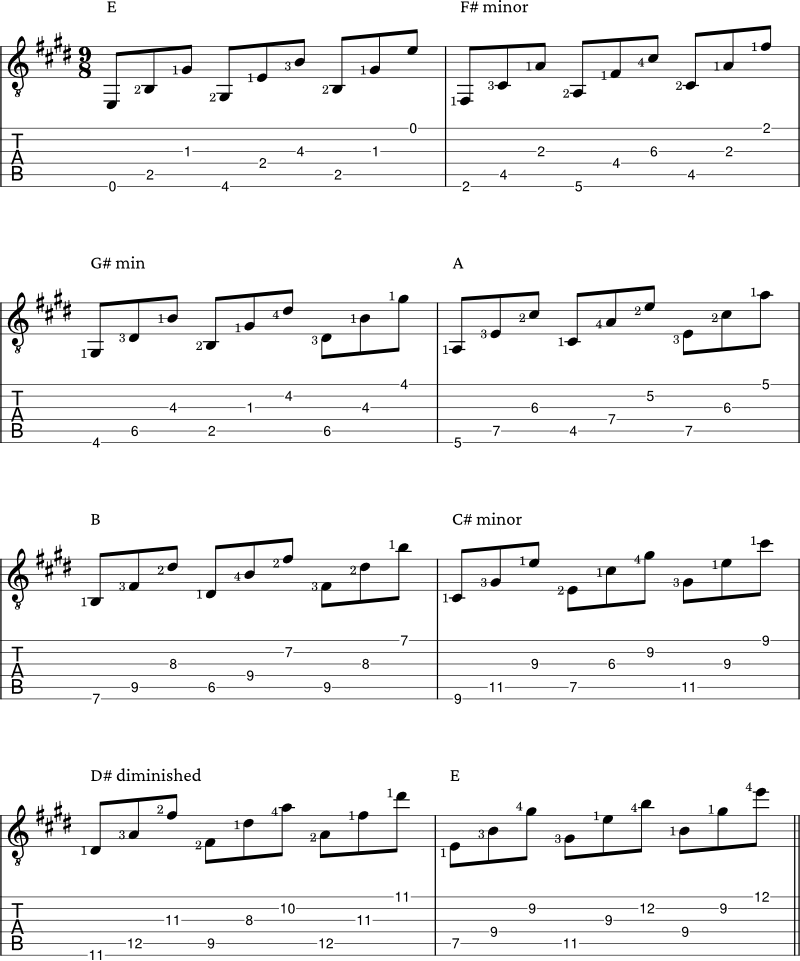
Wrapping up
There is so much you can do with the 3 note chords in terms of finger picking, improvisation and composition. This is because you get a slightly different approach by leaving some notes out of the chord which can be refreshing for the listener.
It can seem overwhelming to have to learn all the different shapes maybe start with one chord quality and experiment with those set of chords to get the most out of this concept before you move on.
Consider writing your own chord progression using these spread triad chords and explore ways to incorporate them to your playing. I hope you this concept will inspire you to create new musical ideas.
📘 Get the free guitar practice guide here!
All the best,
JG Music Lessons

